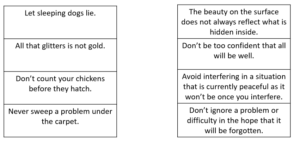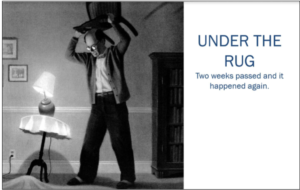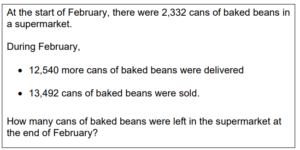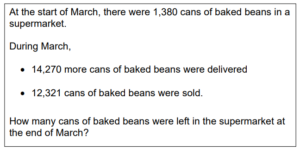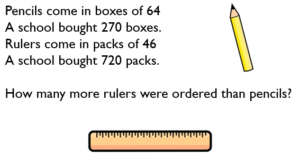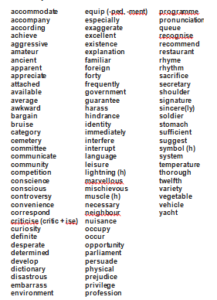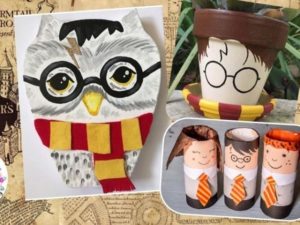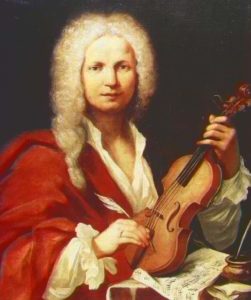Hello Year 5,
We hope you have had an enjoyable week. Below you will find all of your home learning activities for this week – we hope you enjoy completing them. Don’t forget to email through your favourite piece of work so that we can see all of the great learning you have done.
This week’s tasks are as follows:
The Chronicles of Harris Burdick – Reading and Writing Unit
This sequence is developed around the two texts: The Mysteries of Harris Burdick by Chris Van Allsburg and an extract from The Chronicles of Harris Burdick. Both texts are available online and can be found using the following links:
https://mrsgraveswebsite.weebly.com/uploads/1/2/6/8/12686140/the_mysteries_of_harris _burdick.pdf
Lesson 1: Response to Reading
Task 1: Explore the Mystery of Harris Burdick. Websites and PPTs are available at: https://mrsgraveswebsite.weebly.com/uploads/1/2/6/8/12686140/the_mysteries_of_harris _burdick.pdf
http://www.houghtonmifflinbooks.com/features/harrisburdick/
Task 2: Read the introduction letter (below) As you read make notes:
Is there any vocabulary you don’t understand?
Do you have any questions?
How does it make you feel?
Answer the following questions:
Q1: Who was Harris Burdick?
Q2: How many stories did he say he had written?
Q3: How does the introduction letter affect the way we read the book?
Introduction
I first saw the drawings in this book a year ago, in the house of a man named Peter Wenders. Though Mr. Wenders is retired now, he once worked for a children’s book publisher, choosing the stories and pictures that would be turned into books. Thirty years ago a man called at Peter Wenders’ office, introducing himself as Harris Burdick. Mr. Burdick explained that he had written fourteen stories and had drawn many pictures for each one. He’d brought with him just one drawing from each story, to see if Wenders liked his work. Peter Wenders was fascinated by the drawings. He told Burdick he would like to read the stories that went with them as soon as possible. The artist agreed to bring the stories the next morning. He left the fourteen drawings with Wenders. But he did not return the next day. Or the day after that. Harris Burdick was never heard from again. Over the years, Wenders tried to find out who Burdick was and what had happened to him, but he discovered nothing. To this day, Harris Burdick remains a complete mystery. His disappearance is not the only mystery left behind. What were the stories that went with these drawings? There are some clues. Burdick had written a title and caption for each picture. When I told Peter Wenders how difficult it was to look at the drawings and their captions without imagining a story, he smiled and left the room. He returned with a dust covered cardboard box. Inside were dozens of stories, all inspired by the Burdick drawings. They’d been written years ago by Wenders’ children and their friends. I spent the rest of my visit reading these stories. They were remarkable, some bizarre, some funny, some downright scary. In the hope that other children will be inspired by them, the Burdick drawings have been reproduced here for the first time.
Chris Van Allsburg
Lesson 2: Vocabulary
Proverb: a short, well-known saying, stating a general truth or piece of advice
In ‘Under the Rug’, the author uses lots of proverbs to express the advice Grandma continually gives.
Can you match the proverb with the definition?
Challenge:
Can you think of 3 more proverbs that you have come across through your own reading? If not, ask you parents to help you. When you have identified your 3 proverbs you must now write each one in the context of a sentence showing that you can use it correctly.
Lesson 3: Exploring the Writing
Read the extract from ‘Under the Rug’ by Jon Sciezka (below)
The purpose of the writing is to entertain.
What is the effect the writer creates? Do they manage to:
- develop a sequence of events?
- build tension and suspense?
- hint at the relationship between the characters?
How has the writer achieved this?
Collect examples that demonstrate how this has been achieved effectively in the text.
Extract from ‘Under the Rug’
You should always listen to your grandma. It might save a life. Grandmas say a lot of crazy things. Things like . . . Look before you leap. If the shoe fits, wear it. Sit up straight. So you never know what is really good advice and what is just crazy-talk. But grandmas know a lot. You should listen to them. I should have listened to my grandma.
It started on Wednesday, five Wednesdays ago. I know it was Wednesday because Wednesday is sweeping day. Every Wednesday we sweep the house. Grandma sweeps the kitchen. I sweep the living room. At breakfast that morning, five Wednesdays ago, Grandma told me: Hunger is the best sauce. Let sleeping dogs lie. That sweater and bow tie make you look like an old man. I was sweeping and thinking that I like my sweater, I like my bow tie. Which is probably why I forgot the other thing Grandma always says: Never sweep a problem under the rug. I finished sweeping the living room. I put away the dustpan. I was just walking into the kitchen… when I saw the dust bunny under the couch. I swept the dust bunny under the rug. And I didn’t give it another thought until the next Wednesday.
That morning Grandma said: Never say never. Don’t count your chickens before they hatch. What happened to that cake that was on the table? In the living room, I swept up a trail of cake crumbs that disappeared under the rug. I lifted up the rug. The trail led straight to a clump of hair and crumbs and dust and two glowing red eyes that looked very angry. The dust bunny had grown into a Dust Tiger! I dropped the rug. I couldn’t tell Grandma, so I put the end table over the lump in the rug.
That worked sort of okay for about a week. Then the cat food started to disappear. Something got into the garbage under the sink. I tiptoed into the living room. I peeked under the rug. I saw a huge twisted knot of hair, dirt, liver-flavoured Kibbles ‘n Bits and pieces, coffee grounds, orange peels, two chicken bone horns… and those angry red eyes staring hungrily at me. The Dust Tiger had grown into a Dust Devil!
Lesson 4: Grammar Practice and Play
I dropped the rug in a panic.
The lump I had swept under the rug heaved. The lump growled.
I knew I had to take the bull by the horns. I had to strike while the iron was
hot. I had to make hay while the sun was shining.
I dragged the bookcase over and dropped it on the bulge in the rug.
Something squeaked. Something groaned. Then it was quiet. The
bookcase leaned against the wall a bit crooked, but everything was
fine. Everything was fine.
Task 1:
Explain the author’s use of:
1: Repetition
2: Short sentences
Task 2:
Change the underlined sections so that you replace the proverbs with effective alternatives
Task 3: Challenge
Add 3 more sentences:
- Sentence 1 must start with an adverbial phrase (more information about the verb)
- Sentence 2 must contain a semi-colon
- Sentence 3 must contain only 3 words.
Lesson 5: Writing
Continue the story using the image and opening line provided by Harris Burdick.
Challenge:
Once you have completed your short story now write a second from the perspective of the ‘thing’ that was under the rug.
Extra challenge:
You are not allowed to use any word that has the letter ‘d’ in it.
Maths:
Task 1: 20 minutes of times tables work every day. Use TT Rockstars to help you practise.
Task 2: Arithmetic task and times tables task on Sumdog.
Task 3: There are 2 activities set on My Maths to complete. Use your log in details to get onto the website.
Task 4:
Taken from Oak National Academy
Lesson 1 – watch the video and complete tasks given within it
https://classroom.thenational.academy/lessons/decimals-to-represent-decimals/activities/2
Complete the activities based on the lesson
https://classroom.thenational.academy/lessons/decimals-to-represent-decimals/activities/3
Lesson 2 – watch the video and complete tasks given within it
Complete the activities based on the lesson
Lesson 3 – watch the video and complete tasks given within it
Complete the activities based on the lesson
Lesson 4 – watch the video and complete tasks given within it
https://classroom.thenational.academy/lessons/decimals-to-add-decimal-numbers/activities/2
Complete the activities based on the lesson
https://classroom.thenational.academy/lessons/decimals-to-add-decimal-numbers/activities/3
Lesson 5 – watch the video and complete tasks given within it
https://classroom.thenational.academy/lessons/decimals-to-subtract-decimal-numbers/activities/2
Complete the activities based on the lesson
https://classroom.thenational.academy/lessons/decimals-to-subtract-decimal-numbers/activities/3
Task 5:
Taken from HIAS problem solving:
Challenges:
From White Rose Y5 Maths:
From TTS:
Spellings and Grammar:
Task 1: Spelling task on Sumdog.
Task 2: Grammar task on Sumdog.
Task 3:
Write the past tense of these verbs, using –ed and generate a rule.
| Walk
Destroy Trade Hope watch
|
Carry
Listen Expect Inspire Try
|
| hop
tan knit commit hiss tug |
check
prefer grab pull thud trim |
What did you notice about the second set of words?
These verbs need to be changed into irregular past tense verbs:
| bring
think sit write eat run drink fly throw |
do
go have see steal fight light be tear |
Continue to learn the spellings on the Year 5/6 Spelling List – do a few at a time.
RE
Following the celebration of Pentecost in our Church calendar, we would like you continue to reflect upon our Mission and how we can ‘use the gifts God gave us to make our world a better place’.
Just as the Holy Spirit had appeared to the Apostles of Jesus and gave them hope while they were in Jerusalem, we would like you to consider how YOU can use the power of the Holy Spirit to support and encourage others.
Can you complete ONE of the following activities, to explore how we can continue God’s work on Earth as His followers?
– Design a logo for a charity that you feel could be made in order to support others. You can be as creative as you like! Can you include symbols of the Holy Spirit?
– Research one of the following organisations: CAFOD, Christian Aid, Missio. What is special about this charity? How do they put the needs of others first?
– Create a new school Mission Statement for St. Peters – what else can we do to help others in our community and the wider world? Which actions do you feel would be most important?
– Paint a picture of Oscar Romero. How did he follow the values set out by our school Mission Statement? Can you include key facts about his work?
– Write a letter to your local priest. Could you suggest any ways in which you could support the Church in raising money for good causes, in the future? E.g. by helping in a bake sale or coffee morning, once it is safe to do so.
Family Science Activity
Candle chemistry
**Please note that this activity must be carried out in the presence of an adult to ensure safety**
Safety advice for parents
- Do the activity on a table which is cleared of any other flammable objects or materials. Use your judgement as a parent to decide whether or not to let your child light the candles on their own.
- Make sure you’ve blown out any candles after doing the activity. Don’t move a lit candle when doing this activity. Don’t allow your child to touch the wick or candle until it has completely cooled.
- Don’t leave a lit candle unattended at any time. There’s more extensive safety advice on using candles from the UK Fire Service here: http://bit.ly/BeFireSafe
The activity
- Make a blown out candle relight as if by magic.
- ExpeRiment to find out how long a candle will burn in different amounts of air.
- Learn about the chemistry of how a candle burns.
https://www.rigb.org/families/experimental/candle-chemistry
What you will need
- At least one tea light or other small candle.
- Gas-powered cooker lighter (or long handled matches).
- Glass jars or glasses of various sizes.
- Stopwatch (maybe the one on your smartphone) or other way of measuring time.
What to do
https://www.rigb.org/docs/candlechemistry_infosheet_0_1.pdf – for information sheet about the activity.
Going Further Challenge:
Learn more facts about fire: http://bit.ly/FireFacts
Make a carbon dioxide fire extinguisher for your candles: http://bit.ly/CO2Ext
Watch a video on how candles are made: http://bit.ly/CandlesMade
Use a candle to suck water into a glass like Josh does at the end of the film: http://bit.ly/WaterCandle
Topic – India
L.O: To research the key features of a contrasting country.
As part of our country study we would have been researching India, ready for the carnival. Over the coming weeks we will give you areas of research for you to find details and put them together in an interesting way of your choice.
Over the next 2 weeks, please research these NEW areas:
The culture of India – music, dancing, art food…
The religions followed in India – different religions and the way they are followed.
Any festivals celebrated in India – some festivals may have religious links.
Websites to help:
https://www.kids-world-travel-guide.com/india-for-kids.html
https://www.bbc.co.uk/bitesize/clips/z4fr87h
https://kids.kiddle.co/Indian_religions
https://parenting.firstcry.com/articles/15-popular-festivals-of-india-interesting-facts-for-kids/
Art
Art Challenge
Key Stage Two
For your art challenge this week I would like you to do a piece of Artwork linked to a poem or book. This could be a collage picture from Owl and the Pussycat, or a STREETART word from a war poem. You may even design a new front cover for your favourite book. Let your fantastic imaginations go wild!
WOW! CHALLENGE: Read the poem or part of the book aloud to your family, using expression.
Ideas to inspire you:
However, if this doesn’t appeal to you, then you can still send any other art work to me and I will post that on the Blog too.
Please email your artwork to me:
n.pearson@stpeterswaterlooville.hants.sch.uk
Thank you
Keep creating and keep safe!
Mrs Pearson
Music
Antonio Vivaldi
Go to the website below and watch Stephanie Childress’ video about Antonio Vivaldi.
Why was Antonio considered a musical trailblazer?
Now close your eyes and listen to the whole piece on the 2nd video.
What pictures come into your head?
Find a creative way to respond to the music. This could be by dancing, drawing, painting or writing a poem. You may have your own idea.
Further challenge
Why not listen to another piece from Vivaldi’s Four Seasons- Spring, Summer or Autumn? Identify the similarities and differences to the ‘Winter’ piece. Which piece do you prefer and why?
